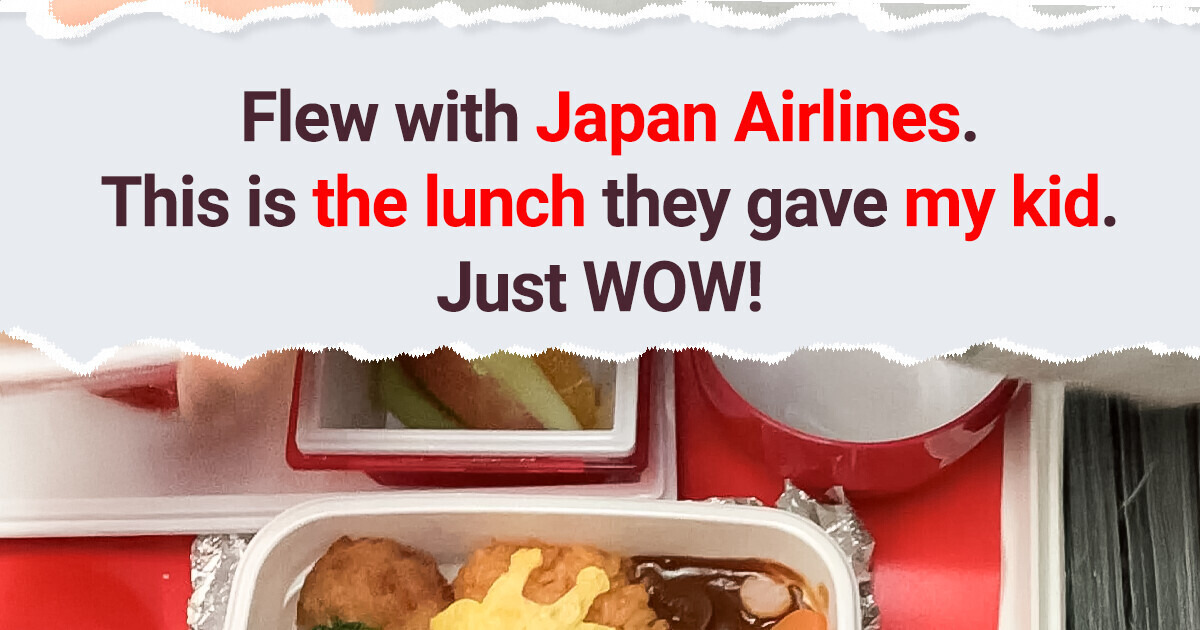13 Little but Important Things to Remember When Doing Home Renovations


Ever wondered what the future might look like? Surprise—it’s already here, and it’s called Japan! This fascinating country, famous for blending quirky culture with jaw-dropping technology, seems to have skipped a few decades ahead of the rest of us. From robots that can outshine your dance moves to cities straight out of sci-fi, Japan is the ultimate test lab for tomorrow’s world.
For years, Japan’s Kyu-Shirataki train station on Hokkaido island had just one true, loyal passenger: a high school girl catching her daily ride to school. This wasn’t your bustling station with crowds and lines— oh no, this was a sleepy stop that only sprang to life a few times each day, just to take her to and from class. It sounds like something straight out of a Hayao Miyazaki film, right? But there’s a good reason this little station kept going against all odds, thanks to Japan Railways, the operator of the country’s rail network.
Passenger numbers at Kyu-Shirataki station — and the neighboring stations — had hit rock bottom, mostly because it was located in the middle of nowhere. Even the freight services stopped chugging along those tracks. But local parents stepped in, asking Japan Railways to keep the station alive for the handful of students who depended on it.
In a rare and heartwarming act of public service, the company decided to keep it running, just until the end of the fiscal year in March when the last passenger, a determined teen, would finally graduate.
The country’s citizens applauded Japan’s dedication to education, with one person commenting, “Why wouldn’t I be proud to live in a country that cares like this? Every citizen counts!”
Not everyone was thrilled, though. Some mourned the slow fade of Japan’s rural railways, which are getting hit hard as the country grapples with an aging population and declining birth rates. Japan’s population is on track to shrink by a third by 2060, which means empty homes, a shrinking workforce, and — yes — fewer people needing trains in remote areas.
While Japan’s high-speed bullet trains expand, connecting bustling cities to more scenic destinations, the older, local lines like Kyu-Shirataki, in the rural town of Engaru, are being left behind. At least 20 rail lines have already disappeared in this part of Hokkaido alone.
Still, the story of this girl and her faithful little station reminds us that Japan’s old-school rural railways won’t be forgotten anytime soon. Even in the remotest parts of the country, these railways played a crucial role, connecting people one school trip at a time.
But as they say, all good things come to an end, and so did the era of Kyu-Shirataki. One day marked a bittersweet moment: 18-year-old Kana Harada graduated from high school, and with her diploma in hand, the station finally closed its doors for good.
For three years, Harada would hop on her train every morning, spending 35 minutes en route to school. But now, her faithful little station’s job was complete.
“I got on and off this train for the last three years, and this station’s presence has become something I have taken for granted,” Harada opened up in January. “I do feel sad to think it will disappear.”
For those years, the train had one job in the morning — to pick her up — and made a few afternoon runs to drop her back home. Kyu-Shirataki station wasn’t the only station facing the end of the line; nearby Kami-Shirataki and Shimo-Shirataki also closed recently, with Japan wrapping up its fiscal year and scaling back due to low ridership.
At the same time, Japan’s shiny new high-speed bullet train made its debut in Hokkaido, and tickets sold out in record time! This high-tech marvel zooms through the Seikan Tunnel — one of the world’s longest undersea tunnels — linking parts of Hokkaido to Japan’s main island. Expanding bullet trains to the northern corners of Japan has been part of the country’s vision, drawing tourists to the breathtaking views and popular ski resorts.
Yet, while Japan’s sleek new trains zip into the future, locals are clinging to memories of the classic railroads that served small towns like Kyu-Shirataki station. Built in the mid-1900s to help kids get to school, Kyu-Shirataki had a legacy all its own. As the story of Harada’s solo rides spread, train enthusiasts — otakus — flocked to the station to snap photos, turning her once-quiet commute into a bit of a spectacle.
On the station’s last day, a reporter captured the heartwarming farewell. Locals had gathered to see off the final train, and staff handed out treats while big banners waved a fond goodbye, “Kyu-Shirataki Station, 69 years, Thank You!” It was the end of an era, but for those who rode, worked, or watched from afar, Kyu-Shirataki will always be remembered.
Japanese trains are so punctual that their annual average delay is less than a minute! Back in 2017, one railway company even issued a heartfelt apology for the “huge inconvenience” of a train departing a whole 20 seconds early. That’s right — 20 seconds!
Whether it’s rush hour chaos or a quiet afternoon, you can count on Japanese trains to show up on time, nearly down to the second.
Taikomochi, also called “houkan”, were the original male geishas — think of them as the life of the party, a bit like jesters with a flair for the arts.
But about 25 years after their heyday, the scene changed as women, known as “geiko” or “arts children,” began to outnumber them. Over time, “geiko” evolved into the geisha we know today, “persons of the arts,” adding grace and elegance to the craft.
In Japan, slurping your noodles is actually a thumbs-up to the chef! If you’re used to Western dining, it might come as a surprise, but here, slurping isn’t rude — it’s practically a compliment. It shows you’re loving the food, appreciating the cook’s work, and, bonus points, it cools the noodles down while boosting the flavor.
It’s a construction company called Kongo Gumi, founded way back in 578 AD. That’s right — they’ve been building things since before most countries even existed!
Vending machines are everywhere — around every corner, on quiet streets, and even in the middle of scenic countryside.
With one machine for every 24 people, Japan takes the prize for the world’s highest density of vending machines, totaling a mind-blowing 5 million. Need batteries, ramen, sake, umbrellas, or even flowers? Chances are, there’s a vending machine just around the corner with exactly what you’re looking for.
Almost half of the world’s zippers come from Japan! One company, YKK, is the zipper giant responsible for keeping pants zipped, bags closed, and jackets secure across the globe. If you’ve got a zipper, there’s a good chance it started its journey in Japan!
Melons are luxury items, prized as much for their flavor as their perfection! They play a big part in Japan’s gift-giving culture, dating back to the days when samurai would present tangerines or melons to their shogun as a sign of respect.
Today, these precious fruits, especially varieties like the Crown melon, are grown with meticulous care. Farmers tend to each melon by hand, ensuring it’s flawlessly round and deliciously sweet. And if you’re thinking of gifting one, be prepared to splurge — some, like the Yubari King, can cost over $200 each.
Japan has a serious love affair with Jamaican coffee, especially the famous Blue Mountain beans. These gourmet beans are grown on small, family-run plantations in Jamaica’s Blue Mountain region, at elevations of over 7,000 feet.
Known for their mild flavor and lack of bitterness, they’re so prized that Japan imports over 80% of Jamaica’s annual coffee production to savor every premium drop! And if you’re not in the mood for coffee, you can always experience the elegance of a Japanese tea ceremony.
In Japan, you won’t often see people munching on the go, unlike in many Western countries. Eating or drinking while walking is rare here. The Japanese usually prefer to pause and enjoy their food in a proper spot.
It might seem unusual at first, but it’s part of a cultural respect for others and an appreciation for savoring each bite. So, if you grab a snack or drink from one of Japan’s millions of vending machines, chances are you’ll see people enjoying it right there or taking it home to relax.
Plenty of people in Japan celebrate Christmas, but the holiday menu might surprise you. Instead of turkey or ham, Christmas Eve calls for a trip to KFC!
Around 3.5 million Japanese line up for their KFC Christmas Dinner, with some folks queuing for hours or placing orders weeks in advance to secure their festive feast. The backstory? Turkey and traditional holiday fare weren’t easy to come by in Japan, so the ever-resourceful Colonel Sanders stepped up to fill the holiday table with crispy fried chicken.
Earth’s second moon has arrived! Here’s what it means for us.











